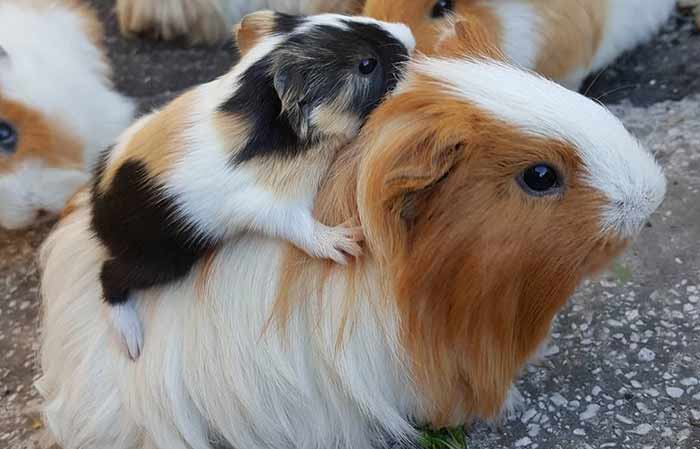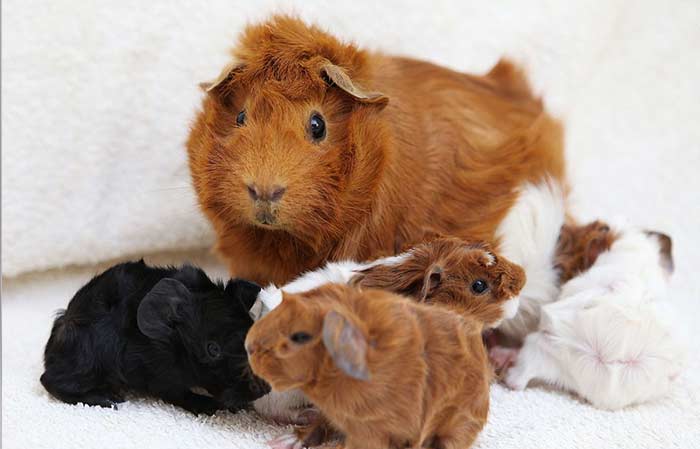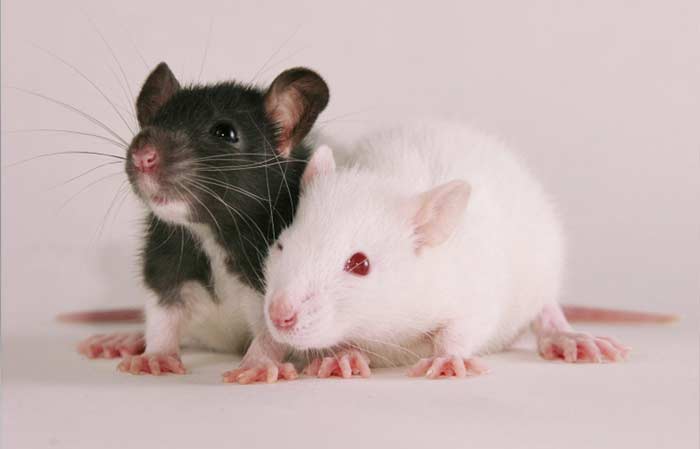Guinea pigs and rats have several similarities and differences and you are probably wondering which of the two would be perfect rodent pet for you. Here is a comparison of the two based on various factors.
Size
Guinea pigs happen to be huge rodents that weigh between 600 to 1300 grams. They measure between 21 and 25 cm in length, have no tail, and live between four and five years on average. Guinea pigs also have cheek pouches.


Pet rats are averagely nine to eleven inches long and have a tail that is eight inches long. An adult male rat weighs around 650 grams while the female counterpart weighs around 400 grams. They have a lifespan of between two to three years and they lack cheek pouches.

Diet
According to vets, guinea pigs enjoy a diet comprising of fresh grass hay and food pellets. They often feed on timothy hay and alfalfa hay although veterinaries advise against overfeeding the rodents on hay since it may lead to obesity and bladder stones.
The rodents also need vitamin C, which they obtain from supplementary diet, raw vegetables, and fruits or through pellets manufactured for guinea pigs.
Poor diet plans for a guinea pig is associated with vitamin deficiency, teeth problems, and difficulties during pregnancy. You should feed a guinea pig with an eighth cup of fresh vegetables and an unlimited supply of hay daily.
Rat pets generally feed on commercial rat nuggets since it is a balanced diet. Rats tend to gain weight quickly hence, you should give them sufficient food to prevent obesity. They also feed on various fresh fruits and vegetables such as cabbage, cucumber, peas, and carrots.
You can also give the rat’s small chunks of meat, eggs, lentils, and mealworms occasionally. It is recommended that you feed your rats with 15% the mass of their body each day, to prevent obesity.
Housing
Domesticated guinea pigs reside in cages although you may dedicate a room for a large number of the rodents. The cage should have either solid or wire mesh floors. Most enthusiasts prefer Coroplast and Cube setup since it is lined with wood shavings. The cage also has bedding materials constructed from paper products, corncob materials, and hardwood.
The guinea pigs will create a huge mess in the cage since they jump into their feeding containers and kick feces and bedding to the containers. After cleaning the cage, you will notice that a guinea pig drags its body on the floor and urinates to mark its territory.
Pet rats can be accommodated in various enclosures, but in most cases, they are placed in cages. The rat cage should have enough space, should be well ventilated and easy to maintain. You can house them in a birdcage enclosure that is easy to clean. They also need plenty of bedding material in the cage so provide them with shredded paper and pellet paper.
Rats often create a mess therefore regular cleaning and changing of bedding are necessary. The cage should protect the rat from harsh weather conditions and environmental dangers. Provide the cage with plastic tubes and cardboard boxes where the rats can hide and sleep. The rats’ housing also requires dripper water bottles or water containers for a constant supply of water.
Friendliness
When properly handled at early stages, guinea pigs can be receptive to being carried and rarely bite and scratch. The rodents rarely explore new territories. They will not attempt to escape from its housing despite having the opportunity.
They are however curious when left to walk freely and often get familiar with you. If you whistle when approaching them, they, in turn, learn to whistle back in response to refrigerator door opening and rustling of plastic containers. They whistle in response to places where they perceive food is stored.
Rats are friendly pets when handled regularly and gently at an early stage. When awarded with treats, they will often enjoy your company. When they are young, they like playing with humans and fellow rats. Therefore, once trained at an early stage, they can be extremely friendly.
Possibility of staying alone or in pairs
Guinea pig pets live in groups of two or more, which is a group of sows or one sow coupled with a neutered boar. Boars can also live together among themselves. The pet learns to bond with its counterparts. Various male guinea pigs can reside in a cage provided the cage has ample space, you introduce them when still young, and that no female species is present.
Rats always require the company of others and easily get
depressed when confined alone. At night, they spot fellow rats using their
sharp smell and they are known to feed communally. Rat pets reflect abnormal
behavior when you leave them without the company.
Rats are normally compatible when introduced when still young. Introducing new adults always results in fights as they attempt to prove dominance. Weaker rats often suffer in case they fail to escape. However, fights between cage mates are rare but you can recognize this in case of a rat hides from its partners.
Compatibility with other Pets
Guinea pigs rarely thrive with other species. Combining them with other rodents such as hamsters and rats can lead to respiratory diseases among other infections. The other rodents may also be violent towards the guinea pig and you do not want this. Large pets such as cats and dogs may consider the guinea pigs as prey but are sometimes trained to consider the rodents as pets.
You may, however, house guinea pigs with domestic rabbits. Some hobbyists claim that the two rodents complement each other although they have diverse nutritional requirements. The two species never feed on similar material and rabbits may carry respiratory infections that they can spread to guinea pigs.
Rats are social pets that require company; they easily get depressed when left alone. During the night, they are active and need the company of other pets.
Maintenance
Guinea pigs create mess hence it is necessary to establish routine cleaning when the rats are still young. You can litter train the pets early or offer these pets a huge cage, this will save on time taken to clean the cage in the future.
Guinea pigs perform social grooming and at times, self grooms themselves. They secrete a milky substance from their eyes and they rub it on their hair while grooming themselves. Male guinea pigs are known to chew their partners’ hairs for grooming and establishing hierarchy.
Baby rats create a lot of mess hence it is necessary to
establish routine cleaning when the rats are still young. You can litter train
the pets early and this will save on time taken to clean the cage in the
future. You can also line the cage with pads to prevent the build-up of rat
waste and bad smell.
Adult rats are known to be extremely clean and spend several hours grooming each other. They tend to be cleaner than other pets such as guinea pigs, cats, and dogs.
Senses
Guinea pigs have a wide angle of vision, around 340 degrees and they view things in partial colors. They have a keen sense of smell, hearing, and touch. They use vocalization to communicate among themselves.
Rats have poor eyesight but have other keen senses. They have a great sense of smell, taste, and touch. They use their hearing sense to detect danger and use their tails to maintain balance and communicate with their partners. Pet rats have a good memory and they can easily remember your face. They hardly get lost since they remember their way around.
Reproduction
- Male guinea pigs attain maturity when they are 3-4months old while the female counterparts become fertile when they reach 5-6 weeks. The female rodent can breed all year long and can have up to five litters a year. Newborn guinea pigs have well-developed teeth, claws hair and can see things partially. The young ones can walk and begin eating solid material immediately although they also suckle.
- Rats also mature at 5 weeks and both genders should be separated at this time. The female takes 3 weeks to gestate and gives birth to 10 pups on average. Newborn rats are blind and deaf and are weaned for 3 weeks by their mother.
- Female rats can become pregnant soon after giving birth. It is however recommended that you give them a two-month rest period between pregnancies. This enables them to regain weight and strength.
How to Acquire Pet Rats + cons & Pros
Where to get them
Pros and cons






